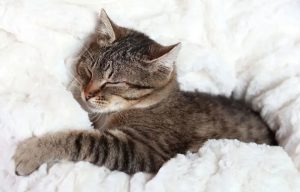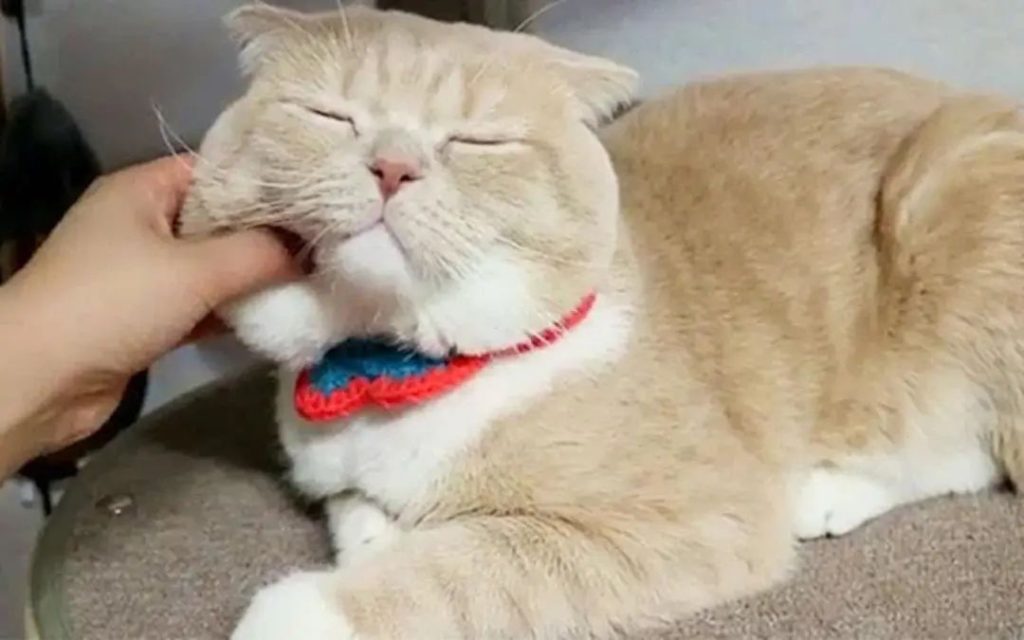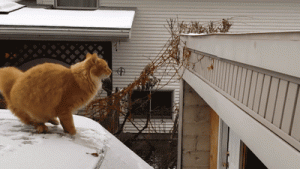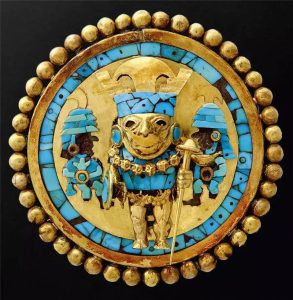Does your cat turn into a little “motorcycle” every time you pet it, with a purring sound that shakes the room? Don’t get too moved just yet! The truth is, a cat’s purr is not just about showing affection. Behind that soothing sound could be a “survival strategy” or even a full-on PUA (Pick Up Artist) performance! Its proud gaze seems to say, “Look, I’ve tamed this human again!” Today, let’s uncover the hidden meanings behind your cat’s purring. After reading this, you’ll be shocked: “Turns out my cat is the real ‘PUA master’!”
-
From Survival Tool to Cuddling Machine
You think purring is just for indoor cats? Think again! It’s a life-saving skill hardwired into the feline gene! In the wild, a mother cat uses purring to guide her blind kittens: “Hey, dinner’s over here!” And the kittens respond with a faint purr: “Mom, I’m still alive—don’t squash me!” What’s even more amazing is that the frequency of purring, between 25-150Hz, acts like a natural “bone healing device.” Wild cats use purring to speed up recovery after injury, and even after neutering, indoor cats purr intensely to heal themselves! Fun fact: Next time your cat purrs like crazy after surgery, don’t just record it for social media—give it a warm compress to aid recovery!、
-
The “Sonic Manipulation” of a Crafty Cat
You think your cat’s purring is all about expressing happiness? Watch out, you might be falling for a trap! Studies show that cats switch between two purring modes:True Love Mode (25-50Hz): When they curl up on your lap and knead you, this is pure affection.Extortion Mode (220-520Hz): When they rub against your legs and purr with a little cry, it mimics the frequency of a baby’s cry, triggering your “feed me now” instinct!
-
Hidden Pain Alarms Behind the Sweetness
Warning! Excessive purring may be a red flag for health issues! When your cat does this:Purrs non-stop for 24 hours.Has a hoarse or raspy sound.Hides in a corner, purring while squatting like a broody hen…it’s using purring to numb pain, similar to a human biting a blanket to tough it out! Cats in pain also show signs like loss of appetite, less grooming, and avoiding climbing. If you touch their ears and they react with “airplane ears” or fur standing on end, it’s time for a vet visit!

-
Purring to Relieve Anxiety
Is your new cat purring like crazy? Or does it purr loudly when guests arrive? It’s not just a warm welcome—it’s a sign of anxiety and stress! Cats release calming pheromones through their purring, comforting themselves and trying to soothe any “potential threat.”
-
The Sadness of Flat-Faced Cats
Garfield, Persians, and other flat-faced breeds are natural “purring machines.” With their squished noses and curved airways, they make loud purring noises—sometimes sounding like a tractor when they sleep. For these cats, purring isn’t always a sign of happiness; it could be a sign of breathing difficulty!
-
Can Purring Lower Blood Pressure?
A surprising study from France shows that when humans hear a cat purring, their brain releases serotonin (the “happy hormone”), causing blood pressure to drop by an average of 10%! No wonder so many people say that having a cat has greatly alleviated their depression. If you have insomnia, placing your purring cat next to your pillow can be as soothing as ASMR—just make sure it doesn’t sit on your face in the middle of the night!
-
The Final Signal: The Gentle Purr at the End of Life
Is your elderly cat suddenly purring wildly at the end of its life? Don’t mistake it for improvement! This is the final act of tenderness: using purring to alleviate severe pain, mimicking the sounds of kittenhood to call for its mother, and leaving behind a warm memory for you, the one they love most
Does your cat love to purr? Is it the “true love purr” or the “sneaky purr”? Feel free to drop a comment, share pictures, and let’s exchange tips on cat care!





